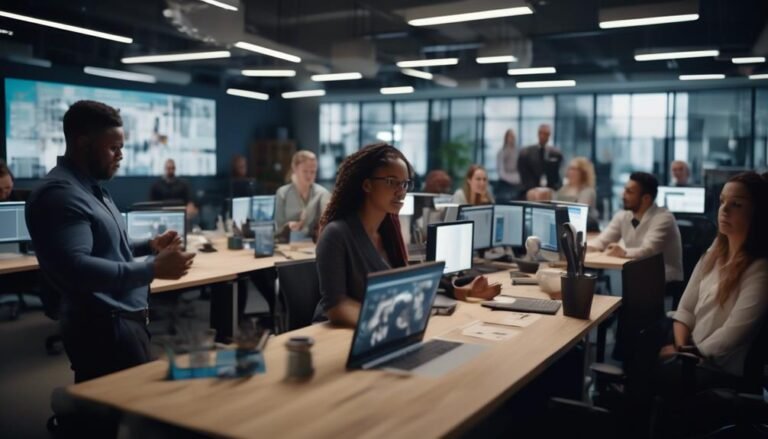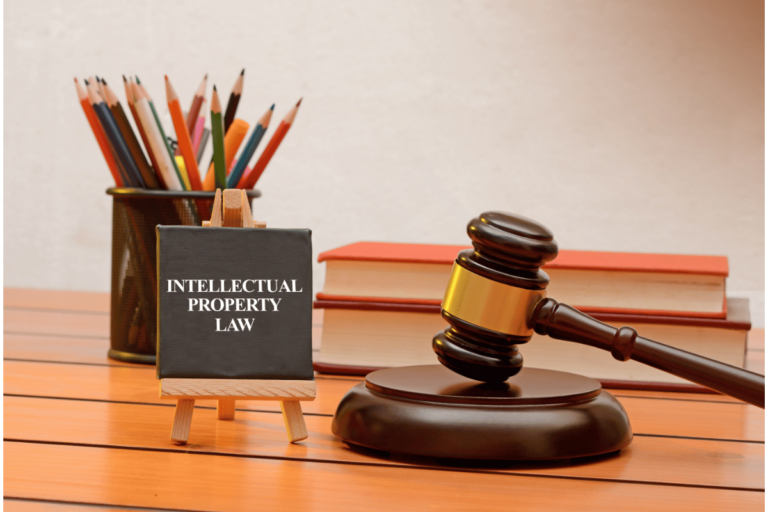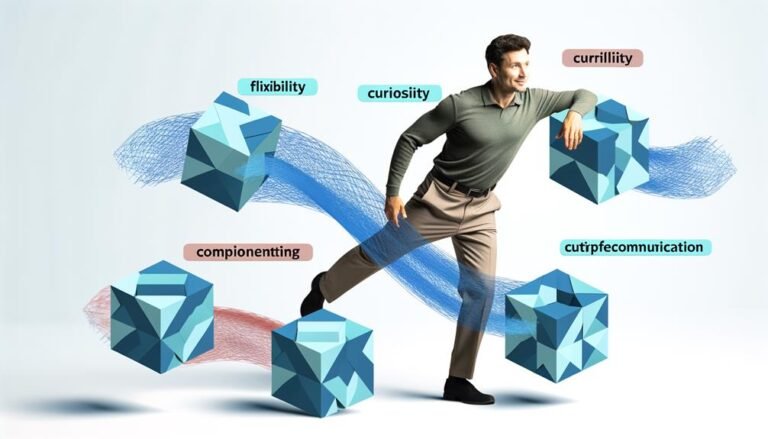The Types of Leaders
Exploring leadership dynamics is a pivotal aspect of organizational success, as leaders play a crucial role in shaping the direction and culture of a company.
This article provided offers insights into the popular types of leaders, shedding light on the diverse approaches individuals adopt in leadership roles.
Understanding these nuances can provide valuable perspectives on how leadership styles impact team dynamics and overall performance.
By recognizing the various leadership archetypes, organizations can better navigate challenges and leverage opportunities in an ever-evolving business landscape.
Key Takeaways
- Diversity in leadership styles drives organizational success and growth.
- Understanding strengths and weaknesses enhances leadership effectiveness.
- Continuous learning and feedback mechanisms improve leadership skills.
- Effective leaders foster collaboration, adapt to change, and inspire innovation.
Understanding Leadership Diversity
In the dynamic landscape of leadership, understanding leadership diversity is paramount to fostering inclusivity and harnessing the full potential of a diverse range of talents and perspectives within an organization. Diversity dynamics play a crucial role in shaping the fabric of modern workplaces. Effective leaders recognize the importance of embracing differences in ethnicity, gender, age, background, and ways of thinking. By valuing diversity, leaders can create a more innovative, creative, and dynamic environment where employees feel empowered to contribute their unique skills and insights.
Inclusive leadership is a key component of leveraging diversity within a team or organization. Leaders who practice inclusive leadership ensure that all individuals feel respected, valued, and included. They actively seek out diverse perspectives, encourage open communication, and create a culture of belonging. Inclusive leaders understand that diversity is not just a checkbox but a fundamental asset that drives success and growth. By fostering an inclusive environment, leaders can unlock the full potential of their team members and drive organizational performance to new heights.
Identifying Leadership Styles
Understanding leadership diversity sets the foundation for identifying various leadership styles that can effectively navigate the complexities of leading diverse teams and organizations. Leadership approaches encompass the philosophies and strategies that leaders adopt to guide their teams towards achieving common goals.
Personality traits play a significant role in shaping leadership styles, as introverted leaders may prefer a more contemplative approach, while extroverted leaders might lean towards more interactive styles. Leadership behaviors, such as decisiveness, adaptability, and integrity, also contribute to defining a leader’s style.
Communication styles are another key aspect to consider when identifying leadership styles, where some leaders may excel in direct and assertive communication, while others may prefer a more collaborative and inclusive approach. By recognizing these different components, organizations can better understand and leverage the diverse leadership styles within their teams to foster innovation, growth, and success.
Assessing Strengths and Weaknesses
Evaluating both strengths and weaknesses is a critical aspect of leadership development and self-improvement. Leaders must conduct a thorough strengths assessment to recognize their areas of expertise and leverage them effectively. Simultaneously, weaknesses evaluation allows leaders to identify areas needing improvement and develop strategies to enhance their overall leadership effectiveness. By understanding their strengths and weaknesses, leaders can make informed decisions, delegate tasks appropriately, and seek professional development opportunities tailored to their needs.
To visually represent the importance of assessing strengths and weaknesses, consider the following table:
| Strengths | Weaknesses |
|---|---|
| Strategic thinking | Public speaking |
| Decisiveness | Time management |
| Empathy | Delegation |
| Conflict resolution | Emotional intelligence |
This table underscores the significance of recognizing strengths that can be optimized and weaknesses that require attention in the pursuit of becoming a well-rounded and effective leader.
Enhancing Leadership Effectiveness
To enhance leadership effectiveness, leaders must actively seek opportunities for growth and development by honing their strengths and addressing areas of improvement identified through thorough self-assessment. Enhancing leadership impact and skills is crucial for leaders to succeed in guiding their teams towards success.
Here are some key ways for leaders to enhance their leadership effectiveness:
- Continuous Learning: Engage in ongoing learning opportunities such as workshops, courses, and seminars to stay updated with the latest trends and leadership strategies.
- Mentorship: Seek guidance from experienced mentors who can provide valuable insights and help navigate challenges effectively.
- Feedback Mechanisms: Establish feedback loops with team members and peers to receive constructive criticism and make necessary adjustments to improve leadership skills.
- Networking: Build a strong network of professionals in diverse fields to exchange ideas, gain new perspectives, and enhance leadership capabilities.
Exploring Leadership in Organizations
Examining the dynamic role of leadership within organizational structures reveals the intricate interplay between individuals, strategies, and goals. Leadership dynamics encompass the ever-evolving nature of leading a team towards shared objectives, adapting to changing circumstances, and inspiring innovation. Effective leaders understand the organizational impact their decisions can have on productivity, employee morale, and overall success.
| Leadership Dynamics | Organizational Impact |
|---|---|
| Adapting to Change | Increased Productivity |
| Inspiring Innovation | Enhanced Employee Morale |
| Fostering Collaboration | Achieving Organizational Goals |
Leadership dynamics are crucial for navigating challenges, fostering growth, and maintaining a competitive edge in today’s fast-paced business environment. The organizational impact of strong leadership can be seen in the alignment of individual efforts towards a collective vision, resulting in improved performance and sustainable success. By exploring leadership within organizations, one can grasp the significance of effective leadership dynamics in driving positive outcomes and shaping a thriving work culture.
Implementing Leadership Development Strategies
Effective leaders recognize the critical importance of implementing strategic leadership development strategies to cultivate a skilled and adaptable workforce. To achieve this, leaders should focus on the following key areas:
- Coaching Techniques: Implementing coaching techniques can help leaders guide their team members towards achieving their full potential. By providing regular feedback, setting goals, and offering support, leaders can enhance the skills and competencies of their employees.
- Team Dynamics: Understanding and managing team dynamics is crucial for effective leadership development. Leaders should foster a positive team environment, encourage collaboration, and resolve conflicts promptly to ensure teams are functioning cohesively.
- Continuous Learning: Promoting a culture of continuous learning helps employees stay abreast of industry trends and developments. Leaders can support this by providing training opportunities, workshops, and resources for professional growth.
- Adaptability: Encouraging adaptability among team members is essential in today’s rapidly changing business landscape. Leaders should instill a mindset of flexibility and resilience to navigate challenges and seize opportunities effectively.
Embracing Personal Leadership Growth
In the pursuit of personal leadership growth, individuals must commit to ongoing self-reflection and development. Embarking on a self-awareness journey is crucial for leaders to understand their strengths, weaknesses, values, and beliefs. This introspection lays the foundation for personal development opportunities that can lead to enhanced leadership skills and effectiveness.
Self-awareness is the cornerstone of personal leadership growth. By gaining a deep understanding of oneself, leaders can better navigate challenges, communicate more effectively, and make well-informed decisions. It is essential for leaders to continually seek feedback, learn from experiences, and adapt their behaviors accordingly.
Personal development opportunities come in various forms, such as attending leadership workshops, seeking mentorship, reading relevant literature, or participating in coaching sessions. These avenues provide valuable insights, perspectives, and strategies for leaders to continuously improve and grow. Embracing personal leadership growth requires a proactive approach to learning and development, as well as a willingness to step out of one’s comfort zone to foster growth and achieve leadership excellence.
Conclusion
In conclusion, leadership can be likened to a symphony where various instruments come together to create a harmonious melody.
Understanding the diversity of leadership styles, assessing strengths and weaknesses, and implementing development strategies are crucial steps in enhancing leadership effectiveness.
Organizations that embrace personal leadership growth will thrive like a well-conducted orchestra, producing beautiful results that resonate throughout the entire team.







